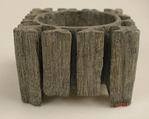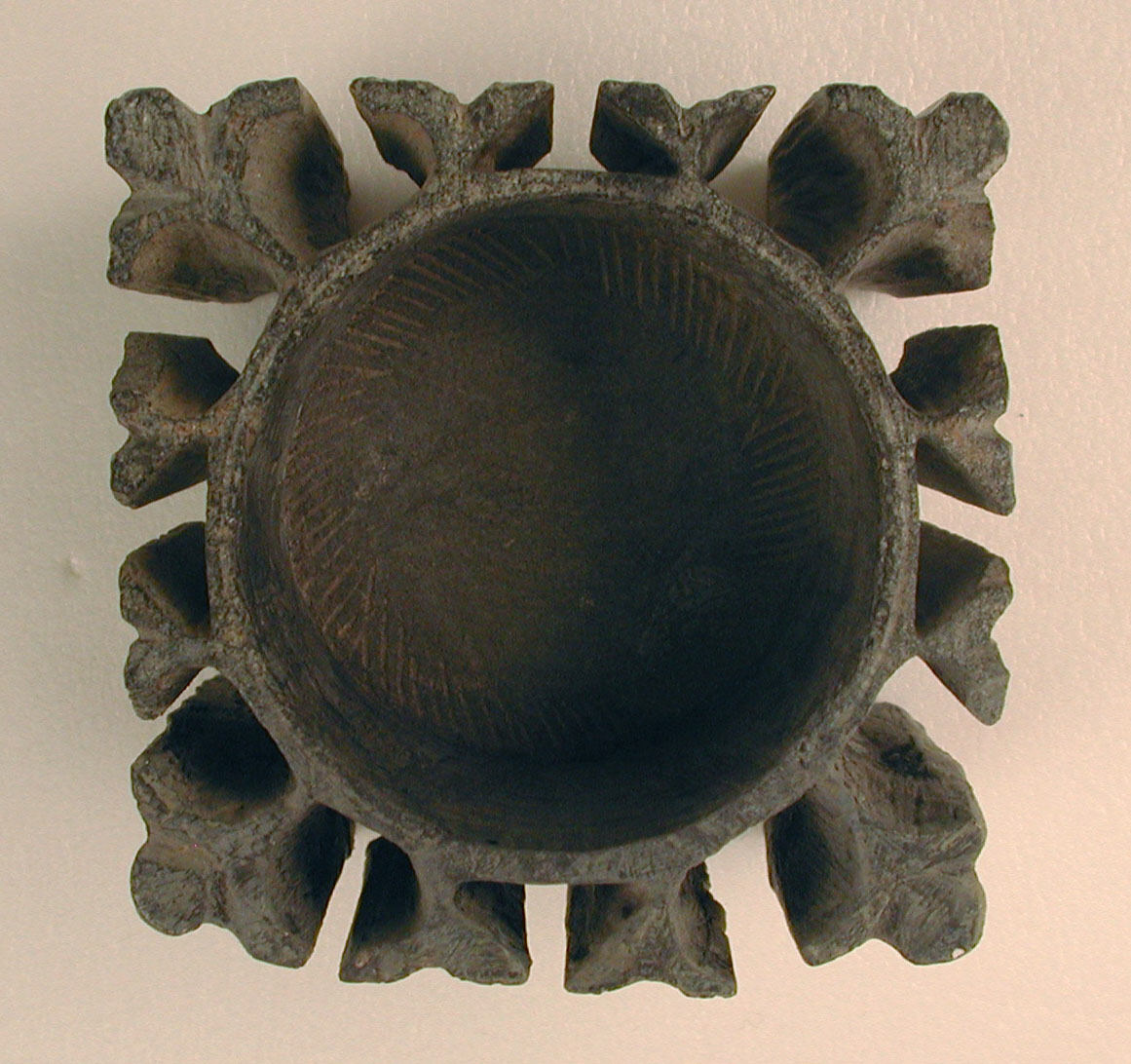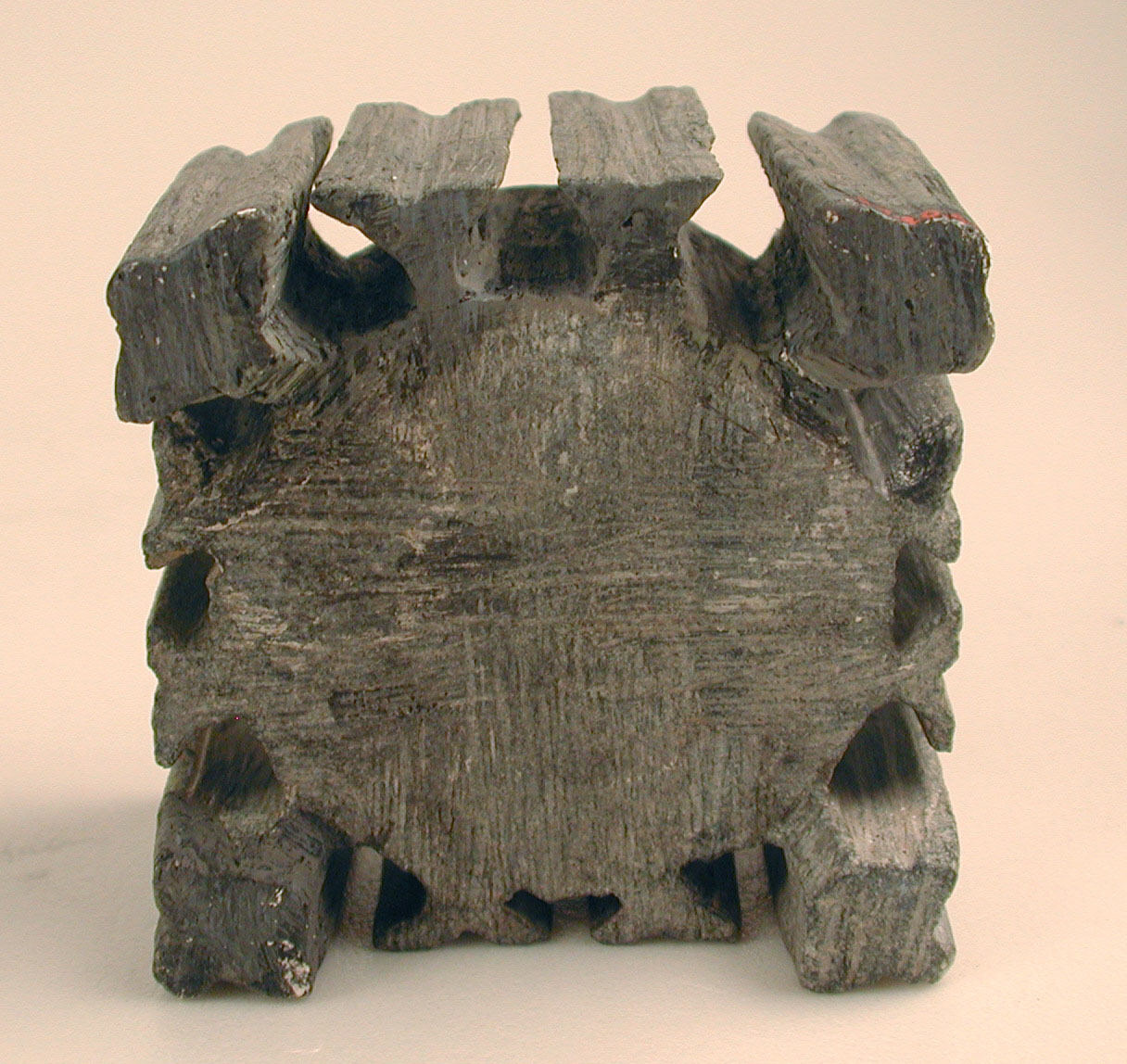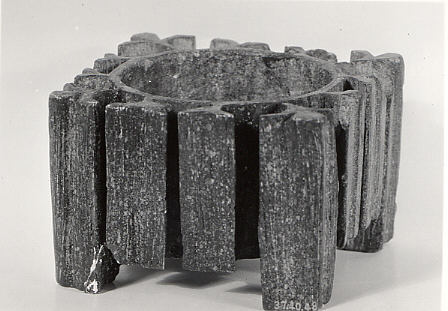Stone Oil Lamp
Not on view
The carving of utensils and other objects from soft stones is is an extremely ancient tradition in the Near East. Steatite and other related talcs (the English word is of Persian origin) are easy to carve, relatively strong and non-brittle, and are impervious to fire. Many of medieval Nishapur's stone utensils demonstrate a high degree of artistic merit, despite having been fashioned from a lowly material and serving a utilitarian function. These pieces often have powerfully sculptural forms with silhouettes that take the form of beautiful two-dimensional patterns. This footed lamp of gray "Mashhad" stone is cubic in shape, with the sides deeply carved into panels leaving a thin-walled interior. The carved panels that also form the legs of the lamp on the four corners, are Y-shaped in cross-section and create ornamental leaf and trefoil forms around the bowl.
Due to rights restrictions, this image cannot be enlarged, viewed at full screen, or downloaded.
This artwork is meant to be viewed from right to left. Scroll left to view more.






